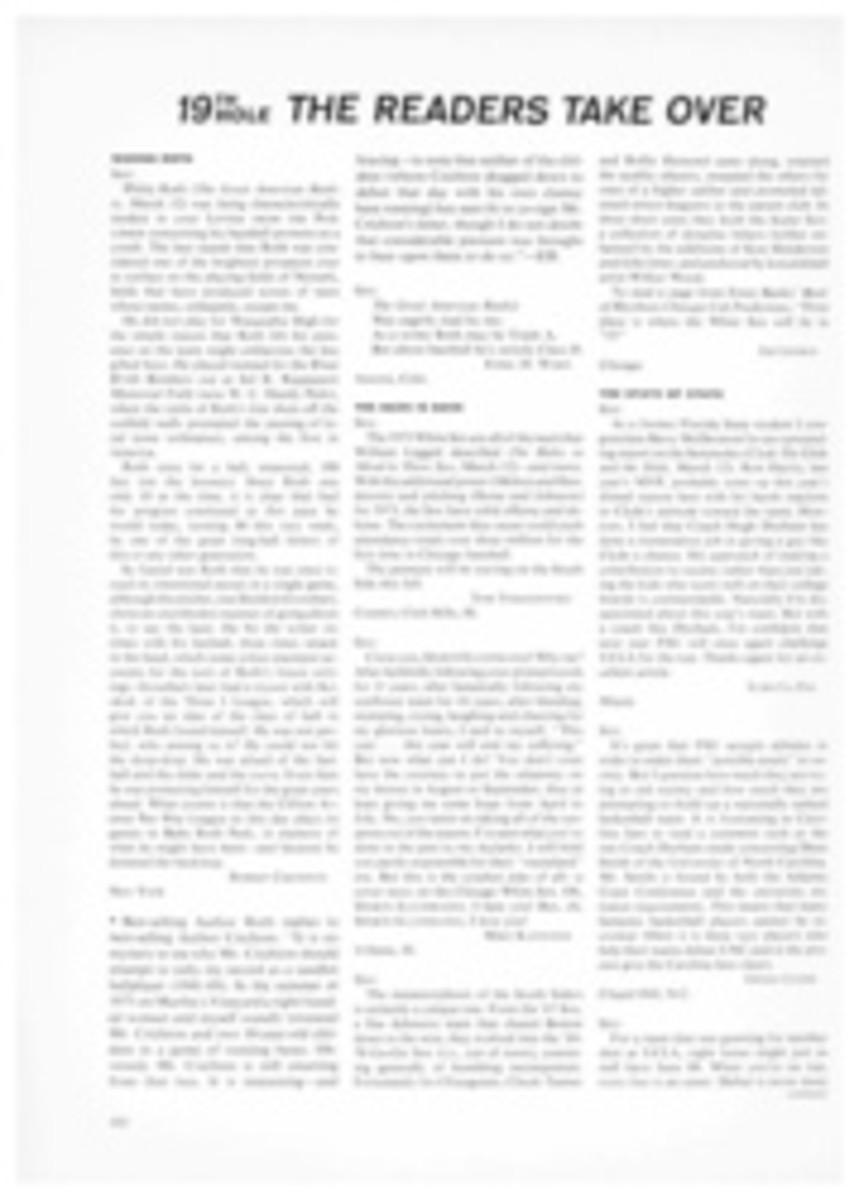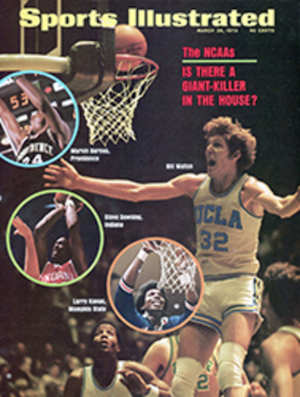
The POWs found a way
The annals of bridge are studded with tales of difficulties overcome in the pursuit of the game: hurricanes, fires, even a power failure in a blizzard that hit the 1958 Spring Nationals in Atlantic City. Now, perhaps topping them all, comes the story told by Air Force Lieut. Colonel William H. Means Jr. of Sumter, S.C. of a continuing duplicate tournament played in an American prisoner of war camp in North Vietnam.
Colonel Means, one of the first POWs to be released by Hanoi, was piloting a reconnaissance plane based in Thailand in July 1966 when he was shot down. His bridge story begins three years later when the North Vietnamese began to furnish playing cards in a limited supply and rubber bridge was added to the prisoners' recreation program.
The colonel had played a little party bridge before leaving the States, says his wife Eugenia, but he did not particularly enjoy it because (Where have I heard this before?) "he never held good cards." His high-card famine ended in prison camp, for he and his POW partner were slightly ahead near the finish of a 100,000-point marathon, only to lose in the last few rubbers.
From that point Means and his fellow prisoners advanced to duplicate bridge, the form of the game most widely employed in tournaments because it eliminates the "luck of the deal" by testing the skill of every pair on the same set of hands. Only one prisoner had ever played duplicate before, so there was considerable trial and error in working out the scoring procedures and the progression of play. The games ranged from three to six "tables," the tables being folded blankets. Since there were only half a dozen decks of cards altogether, a 10- or 12-deal game took two hours. But time, the colonel points out, was the one thing the prisoners did not lack.
The supreme obstacle was a physical one—how to fashion a duplicate "board." The solution was ingenious. Boards were improvised from the plates on which the men ate. Lacking pencils, which would not have written on the porcelain-coated metal anyway, the prisoners manufactured their own ink and used cotton-tipped bamboo sticks as pens. The face of each plate was used as a traveling score; the back was marked with the board number and served as a carrier for four "folders" made, without such luxury items as paper clips or glue, from small slips of paper that enclosed the cards and marked the position of each player, the vulnerability and the dealer. With the luck of the bad cards eliminated, Colonel Means admits that he did not fare too badly.
Although the colonel says only the simplest conventions were used, he and his fellow players were employing one reasonably sophisticated bid, the Unusual No Trump. This is a method that can show two unbid suits (at least five cards in each). During the period the prisoners were using it, the convention was also gaining popularity in U.S. tournament bridge circles. The details of specific hands have escaped him, but the colonel remembers using the Unusual No Trump in the auction on a deal similar to the one shown at right.
If he had a good hand, including strength in the opponents' suits, North normally would pass in hopes that the opponents would get into trouble. Thus Colonel Means' bid of two no trump could be recognized as "unusual." South's jump response was well conceived; since he would have been forced to bid one of North's suits, even with only a doubleton, his four-card holding plus the singleton looked highly valuable.
Assuming that East wins the opening heart with his king and returns the 2 of diamonds, how would you play the South hand? It is tempting to win with the king of diamonds and lead a spade, hoping that West holds the ace. But the play has already marked West with the queen of hearts, and East's failure to raise his partner's club bid suggests that he has no great strength in that suit. Therefore it is probable that East holds the ace of spades. Furthermore, if you spend your diamond king and the spades do not split, you might eventually be overruffed by West with the 6 of diamonds.
The hand is sure to make if the spades divide 3-3, so you must guard against East holding four spades to the ace. You cannot afford to lose the first spade to the player who can lead the second diamond, since that would almost surely cost you another spade loser. Thus, the winning play is to take the first diamond in the dummy and lead the king of spades. East wins his ace but does not have another trump to lead. A heart or a club return can be ruffed in dummy and you can ruff the second spade lead with the 5. You can then return to dummy twice by ruffing and trump two more spades without fear of an over ruff. Finally, with spades established, you can get back to dummy via another ruff and pull West's last trump.
Bill Means' duplicate tournaments confirm something I have often said about bridge: it is a wonderful buffer against troubles and loneliness. While the colonel was playing duplicate to help pass the time in North Vietnam, his wife, not knowing until two years ago whether her husband was still alive, was filling part of the long years of his absence by improving her own bridge game. Beginning as the holder of a mere five master points, she played twice a week in local duplicate sessions, as often as possible in nearby tournaments and once in the Spring Nationals. She is now a Life Master with some 575 master points. Colonel Means will have a worthy bridge partner.
Neither side vulnerable East dealer
NORTH
[King of Spades]
[10 of Spades]
[6 of Spades]
[5 of Spades]
[4 of Spades]
[3 of Spades]
[2 of Hearts]
[Ace of Diamonds]
[Q of Diamonds]
[J of Diamonds]
[10 of Diamonds]
[9 of Diamonds]
[8 of Diamonds]
[Club —]
WEST
[Queen of Spades]
[7 of Spades]
[Queen of Hearts]
[6 of Hearts]
[5 of Hearts]
[6 of Diamonds]
[4 of Diamonds]
[Ace of Clubs]
[Queen of Clubs]
[Jack of Clubs]
[5 of Clubs]
[4 of Clubs]
[3 of Clubs]
SOUTH
[2 of Spades]
[Jack of Hearts]
[9 of Hearts]
[8 of Hearts]
[7 of Hearts]
[King of Diamonds]
[7 of Diamonds]
[5 of Diamonds]
[3 of Diamonds]
[King of Clubs]
[9 of Clubs]
[8 of Clubs]
[6 of Clubs]
EAST
[Ace of Spades]
[Jack of Spades]
[9 of Spades]
[8 of Spades]
[Ace of Hearts]
[King of Hearts]
[10 of Hearts]
[4 of Hearts]
[3 of Hearts]
[2 of Diamonds]
[10 of Clubs]
[7 of Clubs]
[2 of Clubs]
EAST
1 [Spade]
PASS
PASS
SOUTH
PASS
4 [Diamond]
PASS
WEST
2 [Club]
PASS
PASS
NORTH
2 NT
5 [Diamond]
Opening lead: 5 of hearts

